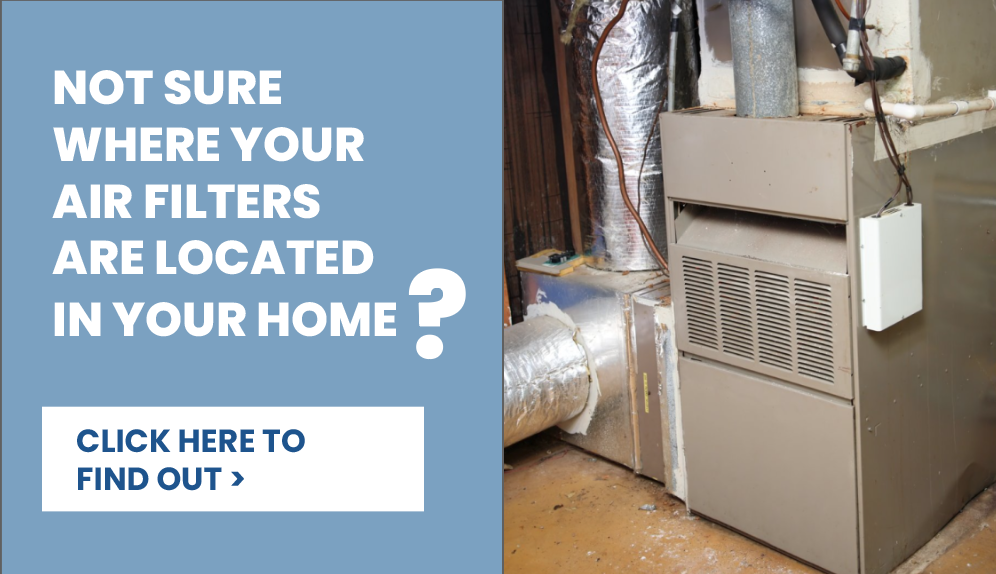- 5 Winter HVAC Mistakes You Might Be Making (and How to Fix Them)
- Is Your HVAC Ready for Winter? 5 Things to Check Before the First Cold Snap
- Breathe Happy This Thanksgiving: Why Air Quality Matters When You’re Hosting
- Fall Into Cleaner Air: 5 Reasons to Change Your Air Filter Before the Holidays
- Don’t Let Dust Bunnies Haunt Your Home: Why Fall is Prime Time for a Filter Change

Why is indoor air quality so important?
The impact of indoor air quality on human health cannot be emphasized enough. Whether it's in our homes, schools, or offices, the quality of the air we breathe indoors is crucial. This is especially true when we consider that Americans spend an average of 90 percent of their time indoors. Surprisingly, the concentrations of certain pollutants indoors can be 2 to 5 times higher than outdoor levels. This poses a significant risk to those who are most vulnerable, such as the young, the elderly, and individuals with cardiovascular or respiratory conditions. Unfortunately, the problem has only worsened over the years due to factors like energy-efficient building construction and the increased use of synthetic materials, personal care products, and household cleaners. It's about time we prioritize the health and well-being of our indoor environment.
Where do these pollutants come from?
Pollutants can originate from various sources, both indoors and outdoors.
Indoor sources include combustion sources found in indoor settings such as tobacco, wood and coal heating and cooking appliances, and fireplaces. These sources can directly release harmful combustion byproducts like carbon monoxide and particulate matter into the indoor environment. Additionally, cleaning supplies, paints, insecticides, and other commonly used products introduce various chemicals, including volatile organic compounds, directly into the indoor air. Building materials can also be potential sources of pollutants, whether through degrading materials like asbestos fibers released from building insulation or from new materials like chemical off-gassing from pressed wood products. Other substances in indoor air, such as radon, mold, and pet dander, are of natural origin.
On the other hand, outdoor air pollutants can enter buildings through open doors, open windows, ventilation systems, and cracks in structures. For example, harmful smoke from chimneys can re-enter homes to pollute the air in the home and other homes in the neighborhood. Some pollutants can come indoors through building foundations, such as radon that forms in the ground as naturally occurring uranium in rocks and soils decays. The radon can then enter buildings through cracks or gaps in structures. In areas with contaminated groundwater or soils, volatile chemicals can enter buildings through the same process. Volatile chemicals in water supplies can also enter indoor air when building occupants use the water, for example, during showering or cooking. Finally, when people enter buildings, they can inadvertently bring in soils and dust on their shoes and clothing from the outdoors, along with pollutants that adhere to those particles.
Here are 5 ways you can help improve your home's air quality and create a safer and more comfortable living space.
1. Change Air Filters Regularly
Maintaining good air quality requires replacing the air filters in your HVAC system on a regular basis.

Depending on their MERV rating, these filters capture various particles like dust, spores, hair, and dander that circulate through your air conditioning system. When they become clogged, these unwanted particles can cause respiratory issues, allergies and allergens. Shockingly, 29 percent of Americans neglect to change their air filter at all, while the majority (82 percent) fail to do so on a monthly basis. Among those who do change it, the majority (31 percent) only do so every few months.
One way to ensure you won't forget to replace your air filters is to sign up for a subscription service like FilterTime. Subscribers choose their air filter type, quantity, size, and how often they want it delivered. Then, when the box arrives at their doorstep, it's a reminder to change their filters. You can sign up to have air filters delivered to your home here.
2. Ventilate Properly
Proper ventilation is key to circulate fresh air and remove indoor pollutants. Open windows and doors whenever possible to let in fresh air and create a natural air flow throughout your home. This not only helps to dilute and remove any stagnant or polluted air but also brings in a refreshing breeze that can make your living space more comfortable.
Opening windows and doors allows for the exchange of air, reducing the concentration of pollutants that may have built up indoors. In addition to opening windows and doors, you can also utilize fans or exhaust systems to further improve air circulation in specific areas of your home, such as the kitchen and bathroom. These areas are prone to accumulating moisture, cooking odors, and other pollutants that can affect the overall air quality. By using fans or exhaust systems, you can effectively remove these pollutants and prevent them from spreading to other parts of your home.
3. Control Humidity Levels
High humidity can promote the growth of mold and mildew, which can negatively impact air quality and trigger respiratory issues. Excess moisture in the air provides the perfect breeding ground for these harmful microorganisms to thrive. When mold and mildew spores are released into the air, they can cause allergic reactions, asthma attacks, and other respiratory problems, especially in individuals who are already susceptible to such conditions.
To combat this issue, it is important to control and maintain ideal humidity levels in your home. One effective way to achieve this is by using a dehumidifier in damp areas, such as the basement or bathroom. Dehumidifiers work by removing excess moisture from the air, helping to prevent mold growth and improve indoor air quality.
4. Go Green with Plants
Indoor plants have an incredible knack for boosting air quality. Not only do they add a touch of nature to our indoor spaces, but they also act as natural air filters, purifying the air we breathe by absorbing harmful toxins and releasing oxygen. Plants possess a unique ability to absorb pollutants through their leaves and roots, effectively eliminating harmful substances like formaldehyde, benzene, and trichloroethylene from the air. These toxins are commonly found in household products and can have detrimental effects on our health, especially on our respiratory system.
Moreover, plants release oxygen during photosynthesis, which can help enhance air quality and create a more invigorating atmosphere. Oxygen is vital for our overall well-being, and having an ample supply of it indoors can boost our energy levels, improve cognitive function, and promote better sleep.
5. Avoid Harmful Chemicals
Chemicals are everywhere in our daily lives, from the cleaning products we use to the furnishings we choose for our homes. Unfortunately, many of these chemicals can release harmful pollutants into the air, negatively impacting our indoor air quality and our health. That's why it's so important to be mindful of the products we bring into our homes and choose alternatives that are safer and more environmentally friendly.
One way to avoid harmful chemicals is by opting for natural cleaning products. Traditional cleaning products often contain harsh chemicals like ammonia, bleach, and phthalates, which can release volatile organic compounds (VOCs) into the air. These VOCs can irritate the respiratory system and contribute to indoor air pollution. By choosing natural cleaning products, you can minimize your exposure to these toxins and create a healthier living environment for you and your family. Look for products that are made with plant-based ingredients and are free from synthetic fragrances and dyes.
By following these simple steps, you can significantly improve your home's air quality and create a healthier environment for you and your family. Celebrate National Indoor Air Quality Month by taking proactive measures to ensure the air you breathe indoors is clean and fresh. Your lungs will thank you!

« Back to News





